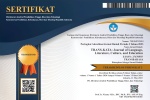Enhancing English Vocabulary Acquisition in Reading Instruction Through Multiple Intelligences Approach
DOI:
https://doi.org/10.54923/jllce.v4i1.67Keywords:
English language teaching, vocabulary mastery, cognitive skills, working with words, category gameAbstract
This research explores innovative strategies to improve students' vocabulary mastery in English language teaching. Utilizing cognitive skill-based approaches, such as the "working with words" strategy, the study aims to create an effective and engaging learning environment. The research employs various methods, including observations, document analysis, recordings, and treatment procedures. Initial observations indicate that students possess a reasonable level of cognitive skills, providing a foundation for vocabulary acquisition. However, subsequent assessments reveal a decline in vocabulary proficiency, prompting the need for intervention. To address this issue, cognitive skill-based strategies, such as the "category game" and "contextual reading clues," are applied in the teaching process. These strategies aim to tap into students' intellectual capacities, motivating independent learning. Post-treatment results show significant improvement, with the contextual reading clues strategy leading to a remarkable 91.30% increase in vocabulary proficiency. In conclusion, cognitive skill-based strategies have a substantial impact on students' cognitive behaviors and vocabulary acquisition. This research emphasizes the importance of integrating vocabulary learning with reading exercises, continuous assessment, and progress recording. It underscores the significance of vocabulary mastery for language proficiency and calls for the integration of such strategies into language teaching practices.
Downloads
References
Creswell, J. W. (2014). Research Design: Qualitative, Quantitative & Mixed Methods Approaches (4th ed.). Sage.
Elsjelyn, E. R. (2009). English Made Easy. Kesaint Blanc Publishing.
Greenall, S., & Pye, D. (1997). Reading 1. Cambridge University Press.
Heaton, J. B., & Methold, K. (1973). Reading with Understanding: Intermediate Book One. Kanisius.
Langan, J. (1982). Reading and Study Skills. McGraw-Hill Book Company.
Mikulecky, S. B., Jeffries, B. L. (1996). Basic Reading Power: Reading Faster, Thinking Skills, Reading for Pleasure, Comprehension. Longman.
Nurgiyantoro, B. (1987). Penilaian dalam Pengajaran Bahasa dan Sastra. BPFE.
Ostrowska, S. (2014). Unlock 1 Reading & Writing Skills. Cambridge University Press.
Pauk, W. (2002). Six-Way Paragraphs: 100 Passages for Developing the Six Essential Categories of Comprehension. McGraw-Hill.
Perkins, M. (2015). Becoming a Teacher of Reading. Sage.
Richards, J. C., & Rodgers, T. S. (2014). Approaches and Methods in Language Teaching (3rd ed.). Cambridge University Press.
Sellars, M. (2014). Reflective Practice for Teachers. Sage.
Senior, R. M. (2006). The Experience of Language Teaching. Cambridge University Press.
Spratt, M., Pulverness, A., & Williams, M. (2012). The Teaching Knowledge Test: TKT Course Modules 1, 2, and 3 (2nd ed.). Cambridge University Press.
Suharsimi, A. (1993). Manajemen Penelitian. Rineka Cipta.
Wahyuni, S., & Abd. Syukur Ibrahim. (2012). Asesmen Pembelajaran Bahasa. Refika Aditama.
Willis, D. (2009). Rules, Patterns, and Words: Grammar and Lexis in English Language Teaching. Cambridge University Press.
West, M. (1953). The Technique of Reading Aloud to a Class. ELT Journal, 8(1), 21–24. https://doi.org/10.1093/elt/VIII.1.21
Lincoln, Y. S., & Guba, E. G. (1985). Naturalistic Inquiry. Sage. https://doi.org/10.1016/0147-1767(85)90062-8
Downloads
Published
How to Cite
Issue
Section
License
Copyright (c) 2023 Sartin Miolo, Jolanda Hulda Deborah Pilongo

This work is licensed under a Creative Commons Attribution-ShareAlike 4.0 International License.





